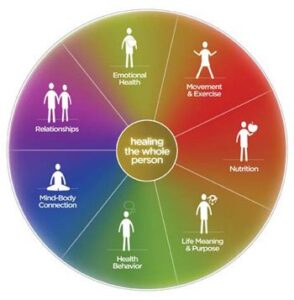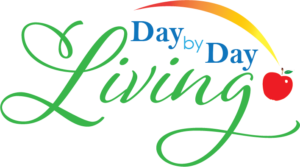From Pill Popping to Inexpensive Disease Prevention Strategies
What if there was one prescription that could prevent and treat dozens of diseases?
What if you went to the doctor and she/he  prescribed daily exercise, eating more colorful vegetables and fruits, and routinely practicing Yoga, Tai Chi, Laughter Yoga and Meditation but not any medication? Hopefully, this will be the wave of the future in medicine.
prescribed daily exercise, eating more colorful vegetables and fruits, and routinely practicing Yoga, Tai Chi, Laughter Yoga and Meditation but not any medication? Hopefully, this will be the wave of the future in medicine.
The American Medical Association (AMA) and the American College of Sports Medicine (ACSM) developed an initiative called The Exercise is Medicine initiative which “is designed to help improve the health and well-being of our nation through a regular exercise prescription from physicians and other healthcare providers.” Research indicates physical inactivity is the fastest growing public health concern in our country. Inactivity contributes to many chronic diseases and health complications which include obesity, coronary heart disease, diabetes, high blood pressure, cancer, depression and anxiety, arthritis and osteoporosis.
A recent survey conducted by ACSM found that nearly 65% of people surveyed said they would be more interested in exercising if advised by their doctor and given additional resources. The survey found four out of ten doctors talk to their patients about the importance of exercise but they don’t offer suggestions on the best ways to be physically active. However, when my son, Geoff, was doing his internal medicine residency at Vanderbilt Medical Center in Nashville several years ago, he was frustrated when he brought up daily exercise to his patients. He said when he mentioned the word exercise his patients would immediately tune him out. I suggested he re-phrase the term exercise to being active since the word exercise has such a negative connotation to most Americans.
The statistics have shown only 25% of patients look to their doctors for advice on exercise and physical activity. The website, www.exerciseismedicine.org, is designed for physicians, insurance companies, schools, professionals, worksites and individuals to help provide them with a multitude of exercises and fitness resources.
Down with Pill Popping and Up With Prevention
Dr. Andrew Weil, MD, who heads the University of Arizona Program in Integrative Medicine (IM), suggested that physicians of the future will buy into the integrative approach to medicine and not be as quick to load patients up with unnecessary drugs when other treatment modalities could actually prevent and also manage health problems like high blood pressure, high blood sugar, obesity and high cholesterol, while decreasing the risk of developing osteoporosis and cancer.
The way of the future will include a partnership with your physician. Your physician will treat you with the whole-person approach which is designed to treat the person, not just the disease. IM, as it’s often called, depends on a partnership between the patient and the doctor, where the goal is to treat the mind, body, and spirit, all at the same time. While some of the therapies used may be nonconventional, a guiding principle within integrative medicine is to use therapies that have some high-quality evidence to support them.
Drug Therapy- Not Always The Best Course of Treatment
Although all the commercials on TV seem to indicate the positive effect of drug therapy, there is also a dark side. Not only are drugs expensive but one has to realize that the side effects could be just as bad as the actual drug. Sometimes the side effects are so pronounced – another drug must be added to manage the side effect. It’s a vicious cycle. For example, I recently was prescribed an antibiotic to get over a bout with bronchitis and sinusitis. I couldn’t sleep for 3 days while on the antibiotic. You might say I was wired. One of the side effects of this antibiotic was insomnia. In order for me to get over my infections, I needed to sleep but I couldn’t.
Another type of drug that many Americans take routinely are statins like lipitor. Side effects include nausea, muscle aching and weakness, mental confusion, erectile dysfunction, liver damage and abnormalities, sleeping problems, bowel problems like diarrhea or constipation, and the list goes on. Proper diet, physical exercise and stress management could help to lower one’s blood cholesterol with zero negative side effects. But in today’s world, many patients are routinely placed on this course of drug therapy that will continue until death due us part rather than encouraging the lifestyle approach. Granted pill popping is definitely easier but it also has its consequences.
Marketing Drugs to Consumers
When the FDA granted the pharmaceutical companies the right to market directly to consumers, this action dramatically endorsed the fact by FDA that the state of one’s health is drug dependent. This action further demonstrates the strength of the PhRMA (Pharmaceutical Research and Manufacturers of America) in our country. Most patients expect to leave their physician’s office with at least one prescription. If not, they don’t feel as though their physician’s visit has been effective. Unfortunately, our culture has been programmed to believe that drug therapy is the only way one can get back to health. Most of the drugs advertised on TV are extremely expensive as much as $1000/month. Recently, my dermatology nurse practitioner suggested two drugs that are currently being advertised on TV. Both drugs cost $1000/month and have a long list of possible side effects. Guessing the #1 reason for these lists is so the DRUG COMPANY, if sued, can say that they effectively informed the patient of all the side effects!
Food for Thought From Sick Care to Well Care
If you needed to lower your cholesterol and blood pressure, your physician could suggest Plan A which would include daily exercise which may help you to lose weight, counsel you to make better food choices and provide strategies to help manage your stress. These strategies would be more cost effective with fewer side effects.
Plan B is the alternative plan which would include taking a cholesterol lowering and blood pressure medicine. The physician could go over the cost of the drug therapy as well as each drug’s side effects. It’s true many people would opt for drug therapy because it’s just easier. Fortunately in today’s world, many health insurance companies pay for expensive drug therapy rather than promote other treatment modalities that could also help treat an illness. If patients had to pay out of pocket for each drug they were prescribed, they may be more interested in finding alternative treatment modalities that were as effective as drug therapy.
If health care is going to be transformed, unnecessary drug therapy is going to have to be evaluated.
Barbara Day, M.S., R.D. is a registered dietitian with a Master’s Degree in clinical nutrition. She is the Chief Blog Organizer for www.DayByDayLiving.net Barbara does fundraising and social media for Veterans Lodge (www.VeteransLodge.org) The former publisher of Kentuckiana HealthFitness Magazine, Kentuckiana Healthy Woman magazine and radio show host of Health News You Can Use, Barbara has over 30 years of experience in promoting healthy lifestyles to consumers. Barbara is a former runner who walks, a spinner, hiker and a mother and grandmother to 13 grandchildren.

